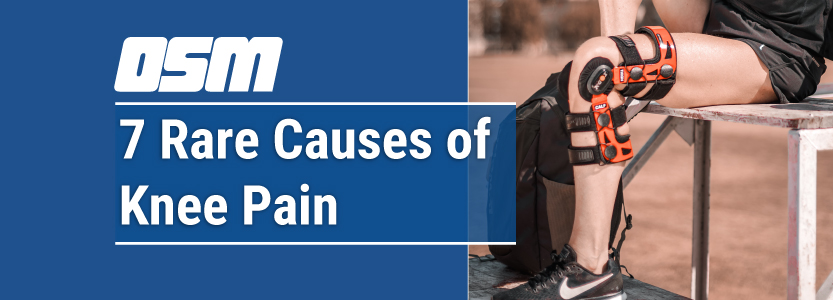7 Rare Causes of Knee Pain
Article featured on Healthgrades
Knee Pain Without Injury
Injury, ongoing stress, and aging are the most common causes of knee pain. But what if none apply? One of several rare causes of knee pain may be at work, including benign tumors, fluid buildup, infection, certain types of arthritis and even genetic mutations. Many of these causes have the exact same symptoms but require very different treatments. It’s important to work with your doctor to arrive at an accurate diagnosis so you can not only start easing symptoms, but also prevent long-term damage to your knee joint.
1. Tenosynovial Giant Cell Tumor (TGCT)
2. Synovial Chondromatosis
3. Chondrocalcinosis 2 (CCAL2)
4. Pigmented Villonodular Synovitis
It’s not yet known what causes pigmented villonodular synovitis (PVNS), and the symptoms are similar to other knee conditions. When you have PVNS, the lining of your knee joint swells and grows, and fluid builds up. Your doctor may test fluid from your knee to diagnose the condition. Symptoms can come and go, so the first step may be resting your knee and taking nonprescription pain relievers. If symptoms are severe and persist over time, your doctor may recommend surgery to remove your knee joint lining. A non-invasive procedure may be an option.
5. Adult Still’s Disease
Adult Still’s disease is a type of inflammatory arthritis that can come with distinct symptoms in addition to knee pain: rash, fever, and sore throat. Your knee joint may also feel achy, and nearby muscles may hurt. It’s not known what causes Adult Still’s disease, but some research points to infection. The condition is usually treated with one or more of these medicines: NSAIDs; steroids; methotrexate; and biologic drugs that target your body’s inflammatory response at the cellular level.
6. Septic Arthritis
Septic arthritis is a joint infection, and the most common type is Staphylococcus aureus (staph). The infection can be caused by an injury such as a cut or animal bite or it can be introduced during surgery–but it’s usually caused by an infection that has traveled from another part of your body like your urinary tract or skin. Septic arthritis is painful, and it may come with swelling, redness, warmth, or fever. Treatment usually includes draining the fluid around the knee joint and taking antibiotics.
7. Reactive Arthritis
Like septic arthritis, reactive arthritis in the knee can also be caused by an infection that has travelled from another part of your body. The most common types are sexually transmitted infections (STIs) and food poisoning. Antibiotics are usually prescribed to cure the infection. Symptoms include pain and swelling, as well as irritation of the genitals or eyes. If you have any symptoms of a rare knee condition, try to write them down and note how long they last. Bring this information to your doctor’s appointment to inform the diagnosis and help speed your time to treatment.
The Orthopedic & Sports Medicine Center of Oregon is an award-winning, board-certified orthopedic group located in downtown Portland Oregon. We utilize both surgical and nonsurgical means to treat musculoskeletal trauma, spine diseases, sports injuries, degenerative diseases, infections, tumors and congenital disorders.
Our mission is to return our patients back to pain-free mobility and full strength as quickly and painlessly as possible using both surgical and non-surgical orthopedic procedures.
Our expert physicians provide leading-edge, comprehensive care in the diagnosis and treatment of orthopedic conditions, including total joint replacement and sports medicine. We apply the latest state-of-the-art techniques in order to return our patients to their active lifestyle.
If you’re looking for compassionate, expert orthopedic surgeons in Portland Oregon, contact OSM today.
Phone:
503-224-8399
Address
1515 NW 18th Ave, 3rd Floor
Portland, OR 97209
Hours
Monday–Friday




